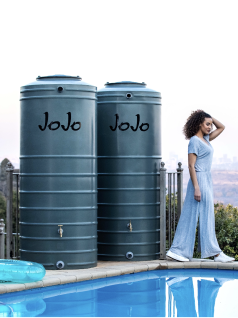Did you know that greywater makes up almost 70% of an average household’s wastewater? In an average household of 4, this is around 300 L of water a day!
Instead of letting it flow down the drain – where it is discharged into rivers and pollutes our aquatic ecology – we should be reusing it for purposes like irrigation and flushing toilets. Doing so will allow us to lower our consumption of freshwater, easing our impact on our country’s already-stressed river systems and aquifers while lowering the water bill.
Want to use greywater to flush your home’s toilets?
You can plumb your home’s showers, baths and sinks to a holding tank that can in turn supply the water required by toilets to flush. All you need, in terms of hardware, is the necessary PVC piping and fittings, shut-off valves and a filter or soil pipe that will enable you to pump the water to a 50-litre JoJo drum.
Want to use greywater for your garden?
Did you know that in homes with gardens, almost 50% of their bulk water usage is used on irrigation? You should direct greywater into sections of your garden with plants that prefer more alkaline soils.
Gravity-fed irrigation is a simple way to use your greywater, although managing the distribution of your greywater is more difficult. Here, all you need to do is direct your greywater to an appropriate spot in your garden – but remember that the water will always collect at the lowest point.
Should you require more control in how your greywater is distributed, a relatively straightforward filter and pump design can be fitted to meet your requirements.
Remember, greywater should be used as quickly as possible once it’s been harvested. Depending on the harvesting methods, it can become septic after just 24 hours, although aerators, biological additives and UV can also be used should you need to upgrade the quality of the greywater.
Speak to your nearest distributor to find out more!


